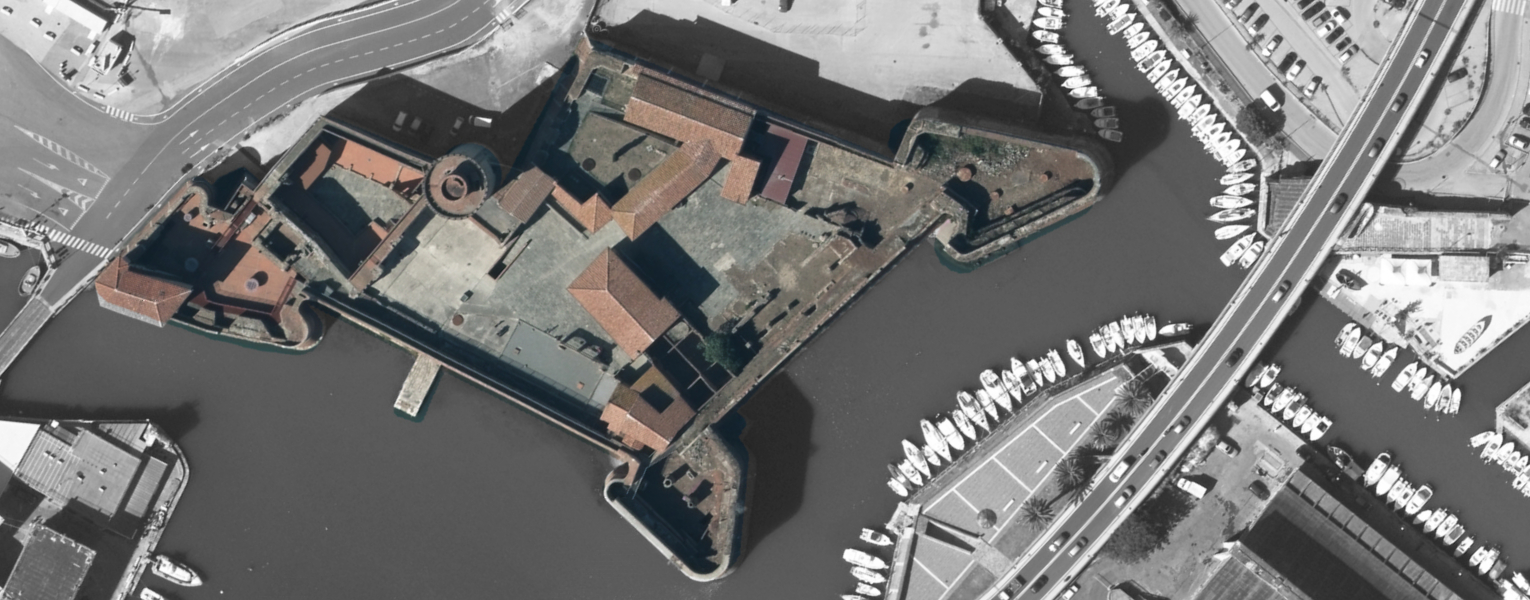
The origins of the Old Fortress most probably date back to Roman times, when some seaward towers were built to defend the small natural harbour along the Thyrrenian coast. The harbour gradually became more important over the centuries as the Port of Pisa went into decline. It was therefore progressively fortified and developed in Medieval times with the construction, initially, of a square-shaped tower (the “Old Tower”) and, later, of a round-shaped tower (“Matilda’s Tower) and, finally, a four-cornered curtain wall making it a fort (“Pisan four-cornered curtain wall”).
When the heart of the Old Fortress was being built, Livorno was still a small farming and fishing village. It was part of the territory of Pisa City Council and under its jurisdiction; the settlement was located opposite to the Fortress.
When the Medici came to power, the Fortress was enlarged with three orillion bastions and isolated by a ditch that completely surrounded it. Its purpose continued to be to that of defending the port, which gradually became more and more important and productive. The fortress was also a tangible sign of the Medicean presence in the area.
Throughout Medieval times, Livorno remained a village of modest dimensions until the Livornine Laws came into force at the end of the XVI century, which led to a tumultuous development of the settlement and the birth of Livorno as a city in its own right (1606 a.C.).
After centuries of being the headquarters of a local military garrison and a prison, at the beginning of the XX century, it became an area of the city until it was almost completely destroyed by bombing during the Second World War. Its proximity to strategic objectives in Livorno Port meant that it was practically flattened. Subsequently, it has been partially rebuilt with restoration operations that continued up to the 1970s.


